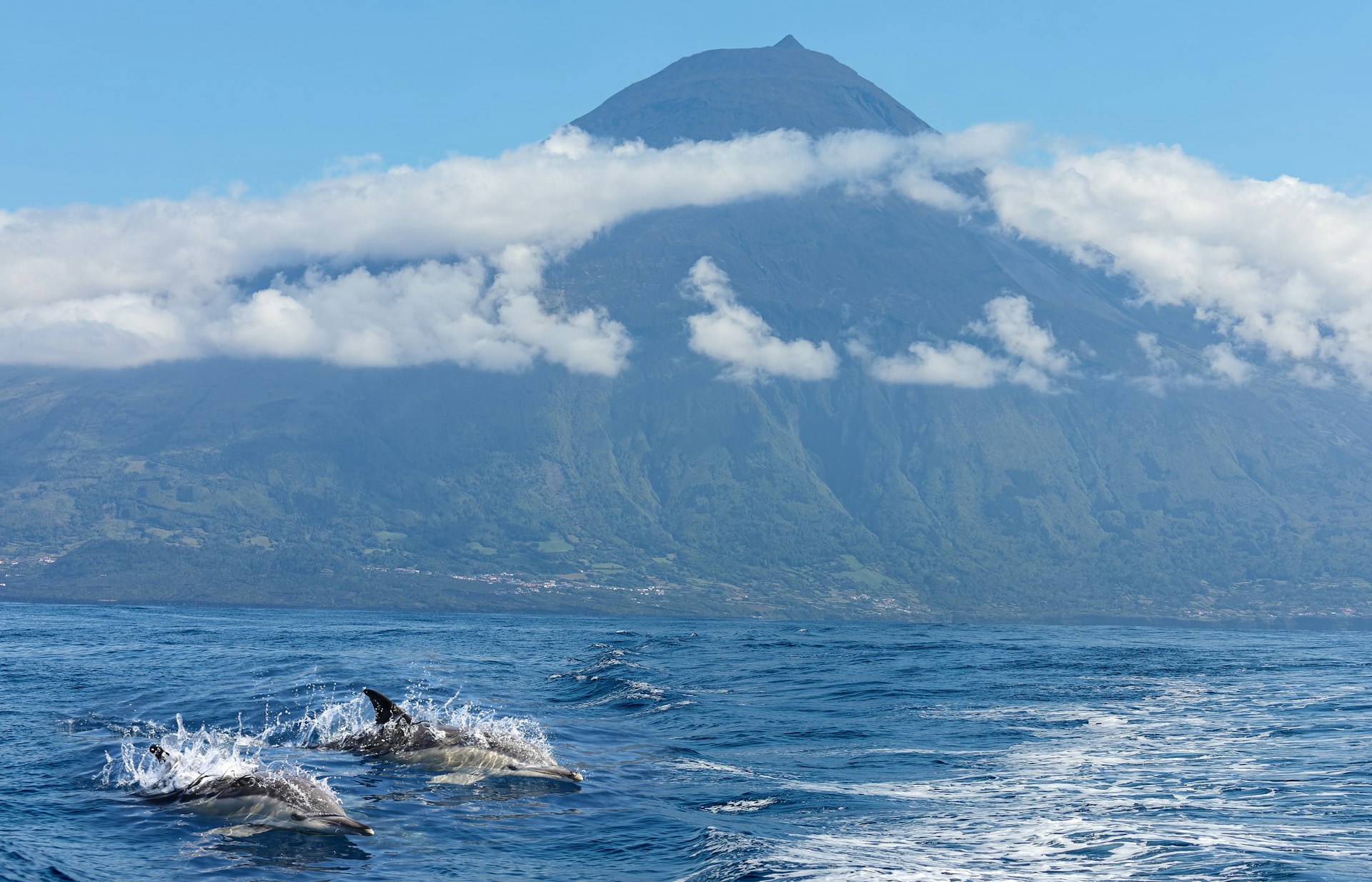The Azoreans travel frequently between islands all year, so the archipelago has a reasonable network of inter-island flights and ferry routes, making it easy to navigate all nine islands. Weather is the only thing that might cause a sudden change of plans, but as locals put it, that's just a part of the Azorean experience.
On the islands of the Azores, buses are not the most reliable option, so renting a car or hiring a taxi is often the better alternative – except in Corvo where the island is so small you can walk everywhere.

Explore the Azores on your own time by driving
Renting a car is the most practical way to travel around the Azores at your own pace – signs for major sights are clear, the traffic is often low and most of the main roads are well-maintained.
However, during peak season, especially in smaller islands with fewer resources, a scarcity of cars sees an increase in prices, and parking spaces can be hard to find near restaurants, top attractions, and beaches.
Some rural roads are so narrow they appear to be one-lane when, in fact, they're two-way streets – unless a traffic sign states otherwise, always expect cars coming in the opposite direction. And it’s not a myth that most of the countryside traffic jams are caused by farmers leading herds of cows between grasslands. Get as close to the side of the road as possible, turn off your engine, and wait it out.
Want to explore the Azores without hiring a car? Find out how to do it.
Non-drivers can hire a taxi to visit must-see attractions
For non-drivers, or if you couldn’t rent a car due to peak season scarcity, hiring a taxi to cover the highlights is a practical way of getting around in the Azores. Taxis aren’t metered, so they’ll either charge a fixed fee based on the area or destinations you want to cover, or charge you by the hour (plan for around €20 per hour).
Taxi drivers often speak English, although sometimes only well enough for basic communication. Those who are a little more fluent will be happy to answer your questions about the island and the sights to the best of their knowledge. Also expect no-strings-attached local tips on where to eat and must-sees, especially on the smaller islands.
Finding a cab that offers round-the-island tours or sightseeing trips is as easy as asking the person driving the taxi from the airport to the hotel – it's typically a service they offer, and if they don't, they'll know someone who does.
Negotiation is usually between you and the driver, but prices generally don’t vary much between taxi companies. Prices are usually quoted as a fixed fees per trip, rather than per passenger, but always check before agreeing to a rate.

Island-hop comfortably by flying
Government-owned SATA Air Açores is the only airline operating all inter-island flights and locals use it pretty much like a bus system, travelling between islands for shopping, doctor's appointments, and business trips. That said, not all routes are convenient, and for neighbouring islands, it's usually easier to take the ferry.
Keep in mind, especially when travelling with small children, that flying between islands is sometimes an exercise in patience. Some flights will make one or two stops before you reach your final destination, which means disembarking for every layover even if it’s no longer than 15 or 20 minutes – this is very common when flying from São Miguel to smaller islands in the Central and West groups.
Some planes are small, with limited space in the overhead compartment and under the front seat. Most passengers only discover which plane they're boarding at the gate or on the tarmac. If the flight is full, you can ask the crew if they can accommodate your luggage in the cargo hold.

See more islands for the price of one by taking the ferry
One ferry ride between close islands can take up to 60 minutes – making it faster, cheaper, and more convenient than a flight. Islanders use it frequently, especially between Faial and Pico, to commute to work. Purchase tickets online, at the Atlântico Line website, or before your trip at the boat station.
The routes with the most frequent trips are the Blue Line, which connects Pico and Faial (a 30-minute ride) and the Green Line, which goes all the way to São Jorge (close to a one-hour ride). The Pink Line connects Flores and Corvo twice a day (40-minute trip), from two times a week in the winter to six days a week in the peak season.
From June to September, the ferry company increases the trips' frequency with three seasonal routes operating two to three days a week. The Orange Line connects Pico and São Jorge at least twice a day, travellers on the White Line can visit all five islands in the Central Group (twice a week), and the Purple Line connects Terceira to São Jorge, Pico, and Faial two times a week.
A local’s tip for riding the ferry
Take it from a local with motion sickness, ferry trips between the “triangle islands” (Faial, Pico, and São Jorge) are a breeze in the summer and a little rougher in the winter but not impossible to make it with the help of preventive motion sickness medication. Ferries are big and stable, and the weather is usually good enough for passengers to sit outside on the top tier. Between Flores and Corvo, though, frequent choppy waters and a small boat can make trips a bit more uncomfortable.
The Azores transportation FAQs and things to consider
Is Uber in the Azores?
A few years ago, there was a short-lived attempt at implementing ride-share services on the larger island of São Miguel, but it never truly took off. For the time being, Uber is not available in the Azores.
Is the public transport in the Azores reliable?
Each island (except Corvo) has its own public bus system, but schedules and frequency are not the most reliable for travellers. Typically, there's one bus in the morning and another at the end of the day, mainly serving schools and workplaces. São Miguel is the island with the best options to travel by bus to top sites, but it takes some planning and flexibility.
Accessible travel in the Azores
Unfortunately, regarding accessibility, the Azores have not quite hit the mark yet. For now, only Azores For All, a São Miguel-based private tour operator, has transportation options for travellers living with a disability.










